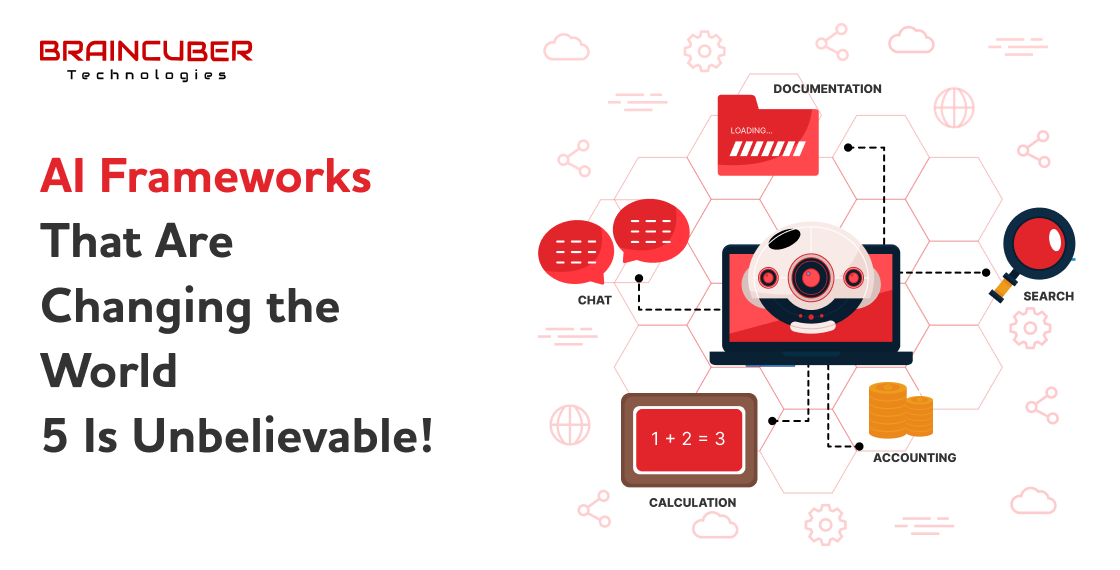Engagement Module
Next Gen AI Solution
Maintenance
Designing
Consultant
Industries
AI Frameworks That Are Changing the World – 5 Is Unbelievable

Artificial Intelligence (AI) frameworks are revolutionizing how we approach technology, enabling developers to build intelligent applications that transform industries. In this article, we delve into the top AI frameworks that are driving this change, with a special highlight on a framework that’s truly unbelievable. Let’s explore these game-changing tools and understand how they are reshaping the world.
1. TensorFlow: Google’s AI Powerhouse
What It Is: TensorFlow, an open-source library developed by Google, is one of the most popular AI frameworks. It’s designed for building and deploying machine learning models.
Why It’s Revolutionary:
Scalability: Capable of handling large-scale machine learning projects.
Flexibility: Supports both machine learning and deep learning.
Wide Adoption: Used by researchers and industry leaders alike.
Use Cases: Image and speech recognition, text-based applications, and time-series analysis.
TensorFlow has made it possible for companies to harness the power of AI with ease, driving advancements in areas like healthcare diagnostics and financial forecasting.
2. PyTorch: Facebook’s Flexible Framework
What It Is: Developed by Facebook’s AI Research lab, PyTorch is known for its ease of use and flexibility. It’s a favorite among researchers for developing deep-learning models.
Why It’s Revolutionary:
Dynamic Computation Graphs: Allows for more flexible model building.
Community Support: Large community contributing to its growth.
Performance: Excellent for complex neural network architectures.
Use Cases: Natural language processing (NLP), computer vision, and reinforcement learning.
PyTorch’s intuitive nature has accelerated the development of AI applications in sectors like autonomous driving and personalized recommendations.
3. Keras: Simplifying Deep Learning
What It Is: Keras is an open-source neural network library written in Python. It acts as an interface for the TensorFlow library.
Why It’s Revolutionary:
User-Friendly: Simplifies complex neural network development.
Modularity: Highly modular, allowing easy experimentation.
Integration: Seamlessly integrates with TensorFlow.
Use Cases: Rapid prototyping, image classification, and neural networks.
Keras has democratized AI, making powerful tools accessible to even those with limited programming experience.
4. Apache MXNet: Efficiency at Scale
What It Is: MXNet is a deep learning framework designed for efficiency and flexibility, supporting a variety of programming languages.
Why It’s Revolutionary:
Scalability: Optimized for both cloud and edge deployment.
Multi-Language Support: Supports Python, C++, R, and more.
Speed: High-performance execution for deep learning tasks.
Use Cases: Image and video processing, natural language understanding, and time series forecasting.
With MXNet, enterprises can deploy AI models at scale, enhancing capabilities in areas like predictive maintenance and video analytics.
5. Caffe: Speed and Simplicity
What It Is: Caffe is a deep learning framework made with expression, speed, and modularity in mind. Originally developed by the Berkeley Vision and Learning Center (BVLC).
Why It’s Unbelievable:
Speed: Known for its quick processing capabilities.
Ease of Use: Simplicity in setting up and running models.
Community and Extensions: Extensive community support and customizability.
Use Cases: Computer vision, image classification, and convolutional neural networks (CNNs).
Caffe’s remarkable speed and ease of use make it a standout framework for AI developers, enabling rapid innovation in visual recognition technologies.
6. Theano: The Pioneer of Deep Learning
What It Is: One of the pioneering deep learning libraries, Theano is known for its efficiency in performing mathematical operations on multidimensional arrays.
Why It’s Revolutionary:
Optimization: Highly optimized for GPU operations.
Numerical Stability: Ensures precision in computations.
Legacy: Served as a foundation for other frameworks like Keras.
Use Cases: Computational mathematics, neural network research, and scientific computing.
Theano’s legacy continues to influence new AI technologies, providing a robust foundation for future advancements.
7. Microsoft Cognitive Toolkit (CNTK): Microsoft’s Scalable Solution
What It Is: Developed by Microsoft, CNTK is an open-source deep learning framework that describes neural networks as a series of computational steps via a directed graph.
Why It’s Revolutionary:
Performance: Optimized for speed and scalability.
Flexibility: Suitable for both small and large-scale projects.
Integration: Integrates well with Azure for cloud-based deployments.
Use Cases: Speech recognition, text understanding, and predictive analytics.
CNTK powers intelligent applications across various industries, from voice-activated assistants to predictive maintenance systems.
8. Chainer: Flexibility and Intuition
What It Is: Chainer is a flexible and intuitive framework for neural network development that supports dynamic computation graphs.
Why It’s Revolutionary:
Dynamic Graphs: Facilitates intuitive model definition and debugging.
Flexibility: Adaptable to various deep-learning scenarios.
Performance: Efficient for both training and inference phases.
Use Cases: Deep learning research, natural language processing, and real-time data analysis.
Chainer’s dynamic nature has made it a favorite among researchers, fostering innovation in AI-driven analytics and real-time processing.
9. PaddlePaddle: Industry-Ready AI
What It Is: Developed by Baidu, PaddlePaddle is an open-source deep-learning platform that provides rich functionalities to facilitate research and industrial applications.
Why It’s Revolutionary:
Ease of Use: Designed for both beginners and experts.
Industry Application: Strong focus on real-world applications.
Scalability: Suitable for distributed training and deployment.
Use Cases: Image recognition, NLP, and recommendation systems.
PaddlePaddle bridges the gap between research and industry, enabling the development of robust AI solutions for commercial use.
10. OpenAI GPT: The Future of Language Models
What It Is: OpenAI’s Generative Pre-trained Transformer (GPT) is a state-of-the-art language model that uses machine learning to understand and generate human-like text.
Why It’s Revolutionary:
Natural Language Understanding: Excels at generating coherent and contextually relevant text.
Versatility: This can be fine-tuned for various applications.
Impact: Influencing advancements in AI-driven content generation.
Use Cases: Content creation, customer service automation, and translation services.
OpenAI GPT’s ability to generate human-like text is pushing the boundaries of what AI can achieve, revolutionizing industries reliant on language processing.
Whether you’re a researcher, developer, or business looking to leverage AI, these frameworks offer the tools needed to build innovative and impactful solutions. As AI continues to evolve, these frameworks will undoubtedly play a pivotal role in shaping the future of technology.
Contact us today to learn more about the frameworks we use and how we can help you or your business with these fantastic AI models!
Frequently Asked Questions
Keras is highly recommended for beginners due to its user-friendly nature and seamless integration with TensorFlow.
Yes, frameworks like TensorFlow, PyTorch, and MXNet are versatile enough for both research and industrial use.
AI frameworks enable businesses to build intelligent systems that improve efficiency, enhance customer experiences, and drive innovation.




